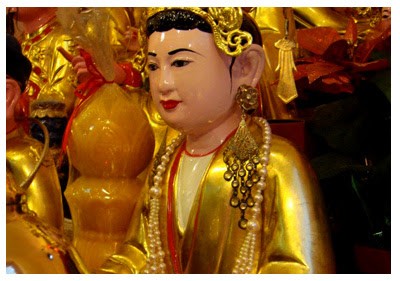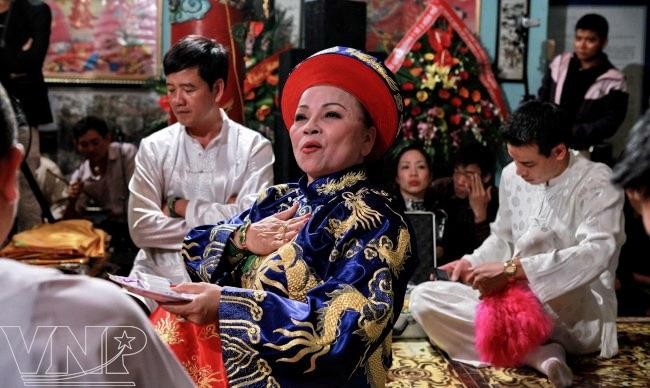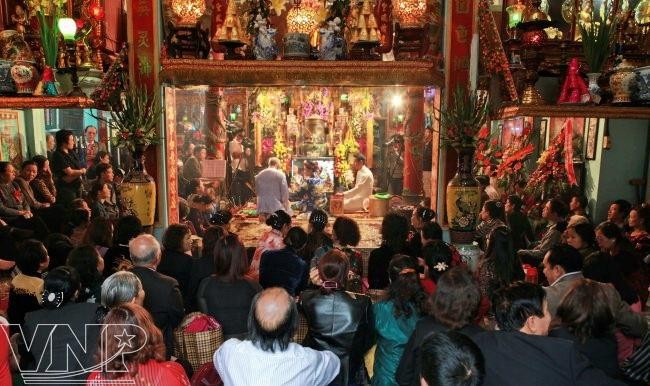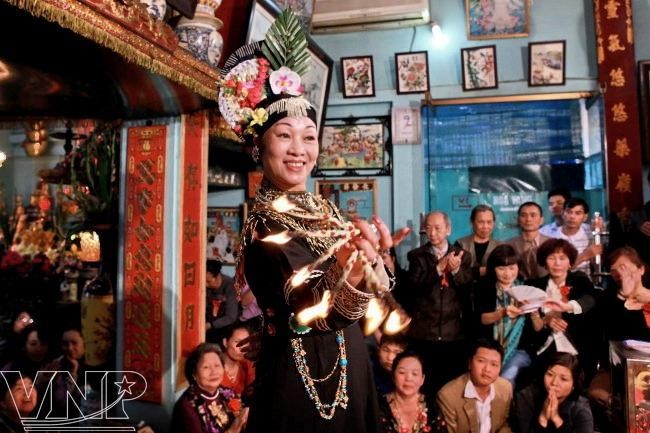(VOVworld)- The ritual of worshipping the Mother Goddess has been associated with Vietnamese people’s spiritual life for thousands of years. It originated in Vietnamese people’s struggle against severe weather, oppression and foreign invaders. The ritual has changed with social developments. Lan Anh reports.

Mother Goddess Lieu Hanh |
Vietnamese life depends a lot on nature because it is sustained mainly by rice cultivation. According to Vietnamese beliefs, the universe is a balance of Yin and Yang, so the Vietnamese worship the Land, Water and Rice genies, which are Yin and are personified as Mothers. Vietnamese people associate a number of phenomena like fertility and creativity with the symbol of the mother. Vietnamese believe Mother Goddesses have the power to bless them with fertility and protect them.
According to Professor Ngo Duc Thinh, Director of the Vietnam Centre for Research and Conservation of Culture and Belief, the ritual of worshipping the Mother Goddess reflects a concept of nature as a divine mother who protects her children from harm. Mr. Thinh said:“The belief in Mother Goddess became the Vietnamese ritual of worshipping Mother Goddess. The belief doesn’t concern life after death but the current life. It embodies Vietnamese people’s wish for happiness, prosperity, and longevity. These are the eternal wishes of Vietnamese people”.
Mr. Nguyen Tien Dung is a researcher with the Vietnamese Belief Research Center: “The Mother is always honored in Vietnamese traditions. The Mother is land. The mother represents harmony, kindheartedness, coolness, protection, support and care. The mother mentioned here is the embodiment of Mother Goddess Lieu Hanh. There are many Vietnamese songs, lullabies, and literary works praising the mother and her contribution to the nation”.

Hau Dong performance |

A performance of Hau Dong |
The ritual of worshipping Mother Goddess also reflects the Vietnamese traditions of patriotism and when drinking water, remembering its source. 60 genies who were historical figures who rendered great services to the nation are worshipped by the Mother Goddess religion. The Jade Emperor holds the highest place, then the Mother Goddess, and the Genies. Legends say the First Prince Genie embodies King Le Loi, the first King of the Le Dynasty. The Second Prince Genie embodies Mandarin Trieu Tuong of Thanh Hoa, who established the people on the land. The Third Prince Genie in Ha Nam province helped the King wipe out Vietnam’s enemies and the Tenth Prince Genie in Nghe An embodies General Nguyen Xi, who served King Le Loi. Professor Ngo Duc Thinh said:“The belief demonstrates Vietnamese people’s tradition of when drinking water, remembering its source and paying tribute to their ancestors and national heroes. The belief clearly reflects Vietnamese people’s patriotism”.
In the belief of worshipping the Mother Goddess, the Chau van or spirit medium ritual contains important artistic and cultural values. Through performances of trance singing and dancing, the ritual conveys a message of solidarity and community spirit. The medium who receives the deities can assume the roles of different genies: a general, a mandarin or a girl in different sessions. There can be 36 sessions of spirit mediumship but a single medium can only serve between 15 and 25 sessions. Professor Ngo Duc Thinh again: “Worshipping the Mother Goddess reflects the harmony of Vietnamese culture. This is a Vietnamese belief but we can see cultural characteristics of other ethnic groups because the Vietnamese also worship genies of other ethnic groups. So, in sessions of mediumship, the clothing styles, customs and dances of other groups can been seen”.

Hau dong performance on Vietnam Cultural Heritage Day.
|
The Vietnamese belief in the Mother Goddess has been around for thousands of years. It’s a unique and harmonious blend of spiritual and artistic characteristics. It is a type of folklore performance that brings inspiration to its participants.